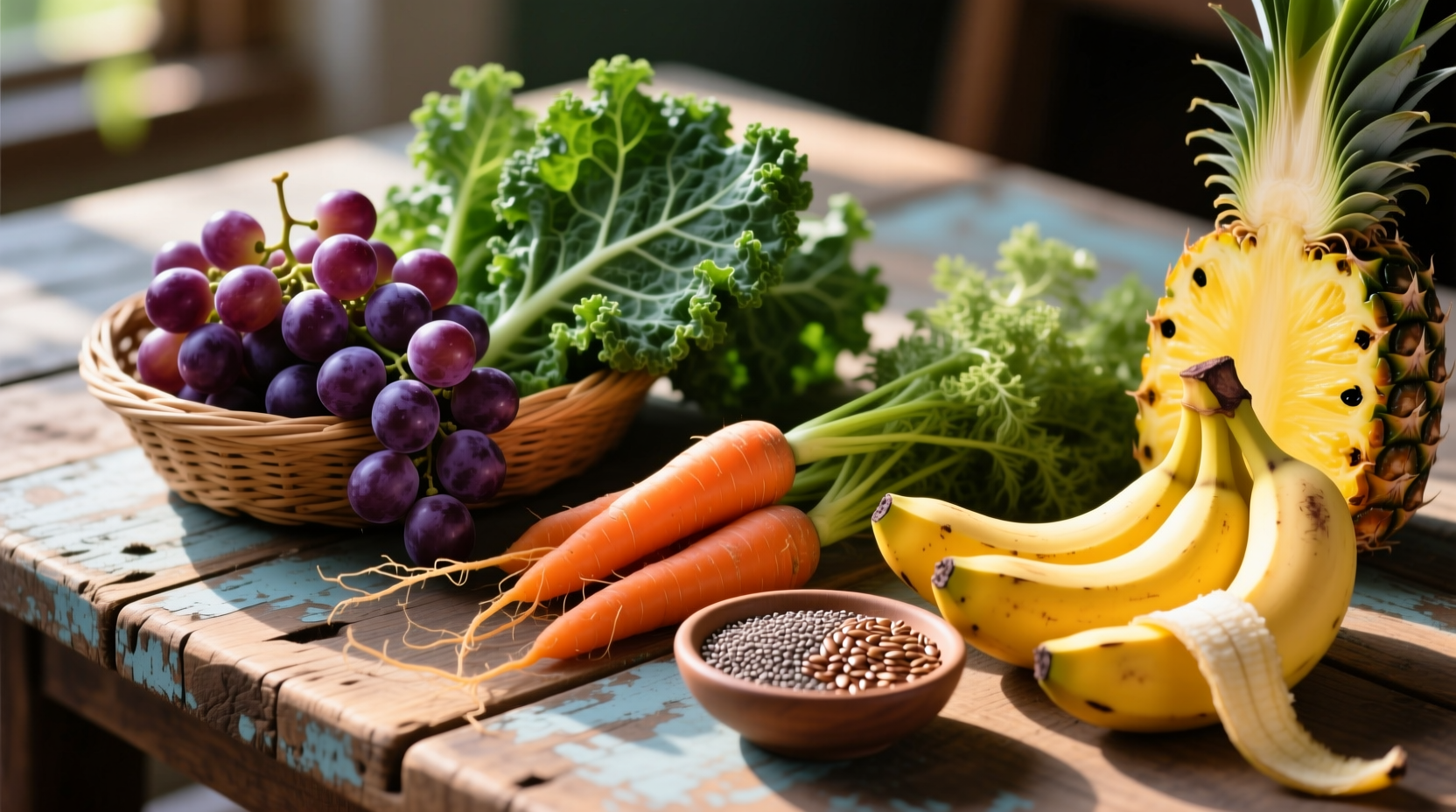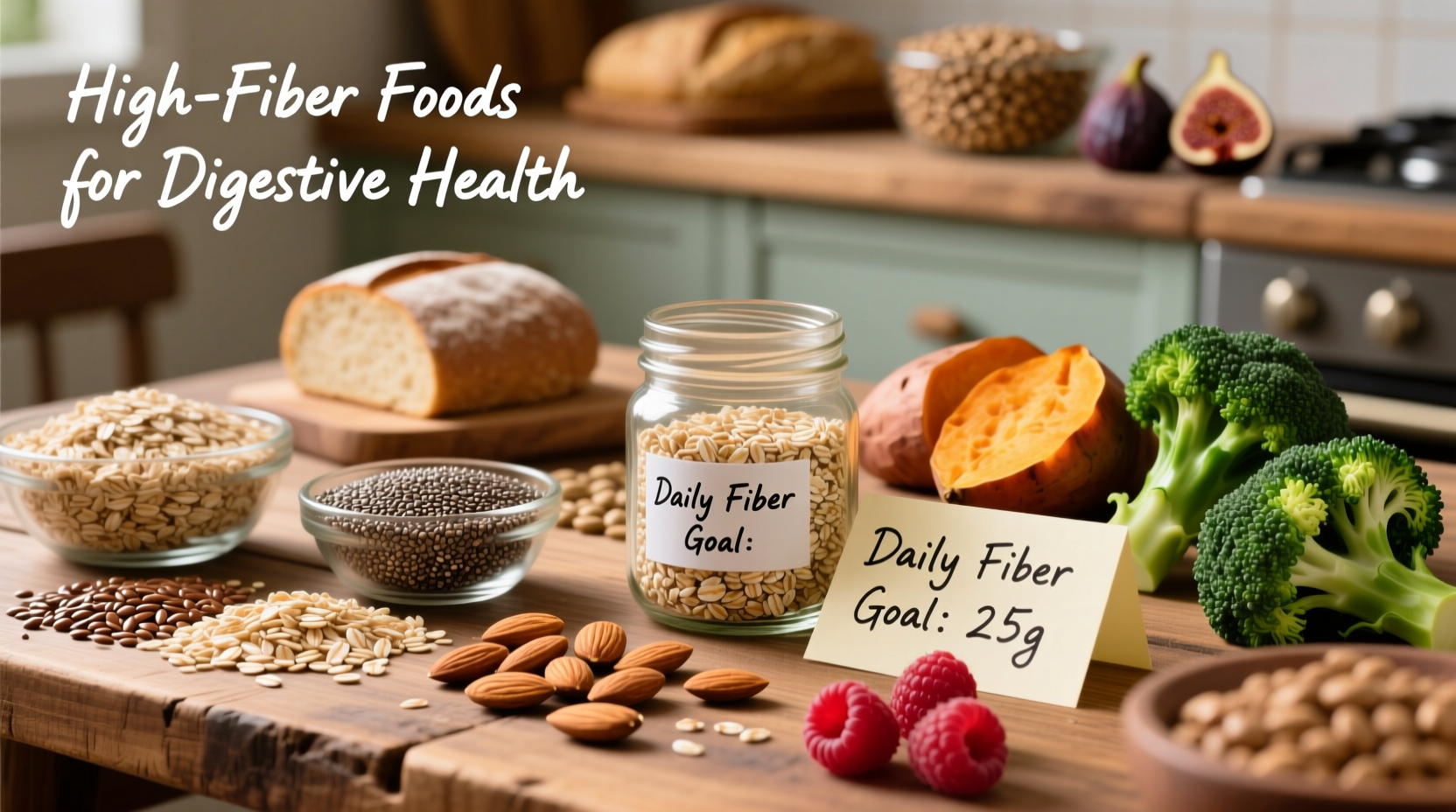Top high-fiber foods include raspberries (8g per cup), lentils (15.6g per cooked cup), chia seeds (10g per ounce), artichokes (10.3g per medium), and split peas (16.3g per cooked cup). Adults need 25-38g of fiber daily for optimal digestive health, blood sugar control, and heart disease prevention according to USDA dietary guidelines.
Your Complete Guide to High-Fiber Foods and Their Benefits
Discover exactly which foods deliver the most fiber per serving and how to incorporate them into your daily meals. This guide provides evidence-based recommendations with precise measurements from authoritative nutrition sources, helping you meet your daily fiber goals without digestive discomfort.
Why Fiber Matters More Than You Think
Fiber isn't just about preventing constipation. Research from the National Heart, Lung, and Blood Institute shows adequate fiber intake reduces heart disease risk by 30% and type 2 diabetes incidence by 27%. The American Heart Association recommends 25-30g daily from food sources rather than supplements for maximum benefit.
There are two essential types of fiber working differently in your body:
- Soluble fiber dissolves in water, forming a gel that slows digestion and helps control blood sugar (found in oats, beans, apples)
- Insoluble fiber adds bulk to stool and speeds material through your digestive tract (found in whole wheat, vegetables, nuts)
Top 10 High-Fiber Foods With Exact Measurements
Based on USDA FoodData Central nutrient analysis, these foods deliver exceptional fiber content per standard serving. Note that cooking methods significantly impact final fiber concentration.
| Food | Serving Size | Total Fiber (g) | Soluble/Insoluble Ratio |
|---|---|---|---|
| Split peas (cooked) | 1 cup | 16.3g | 35% soluble / 65% insoluble |
| Lentils (cooked) | 1 cup | 15.6g | 40% soluble / 60% insoluble |
| Black beans (cooked) | 1 cup | 15g | 50% soluble / 50% insoluble |
| Chia seeds | 1 oz (28g) | 10g | 100% soluble |
| Artichoke (globe) | 1 medium | 10.3g | 30% soluble / 70% insoluble |
Practical Fiber Integration Strategies
Increasing fiber intake too quickly causes bloating and gas. Registered dietitians recommend this gradual approach based on National Institutes of Health clinical guidelines:
- Start with 5g additional fiber daily for one week
- Add another 5g weekly until reaching target intake
- Pair each high-fiber food with 8oz water to prevent digestive issues
- Spread fiber intake across all meals rather than concentrating in one meal

Avoid These Common Fiber Mistakes
Many people sabotage their fiber efforts with these preventable errors:
- Drinking insufficient water - fiber needs adequate fluid to function properly
- Over-relying on supplements - whole foods provide additional nutrients beyond just fiber
- Eating processed 'high-fiber' products - many contain isolated fibers with less benefit than whole food sources
- Ignoring individual tolerance - people with IBS may need to adjust soluble/insoluble ratios
Fiber-Rich Meal Planning Made Simple
Instead of complicated recipes, try these practical daily patterns that naturally boost fiber:
Breakfast: Overnight oats with 2 tbsp chia seeds (10g fiber) + 1 cup raspberries (8g)
Lunch: Lentil soup (15g fiber) with side salad containing artichoke hearts
Dinner: Black bean tacos with avocado and whole grain tortilla (12g+ fiber)
This pattern delivers approximately 45g of fiber, well above the recommended daily amount. Adjust portions based on your specific needs and tolerance.
Special Considerations for Different Diets
Fiber sources vary significantly across dietary patterns. The Academy of Nutrition and Dietetics notes these important distinctions:
- Keto dieters should focus on avocado, chia seeds, and low-carb vegetables like broccoli
- Vegans naturally get more fiber but must monitor protein balance with high-fiber legumes
- Gluten-free eaters often miss wheat bran benefits - replace with quinoa and buckwheat
- Seniors need slightly less fiber (21g for women, 30g for men) due to slower digestion
When More Fiber Isn't Better
Certain medical conditions require fiber modification under professional guidance:
- Active Crohn's disease flares often need temporary low-fiber diets
- Post-surgical patients may require modified fiber intake during healing
- People with strictures need to avoid high-fiber foods that could cause blockages
Always consult your healthcare provider before making significant dietary changes if you have existing health conditions.











 浙公网安备
33010002000092号
浙公网安备
33010002000092号 浙B2-20120091-4
浙B2-20120091-4